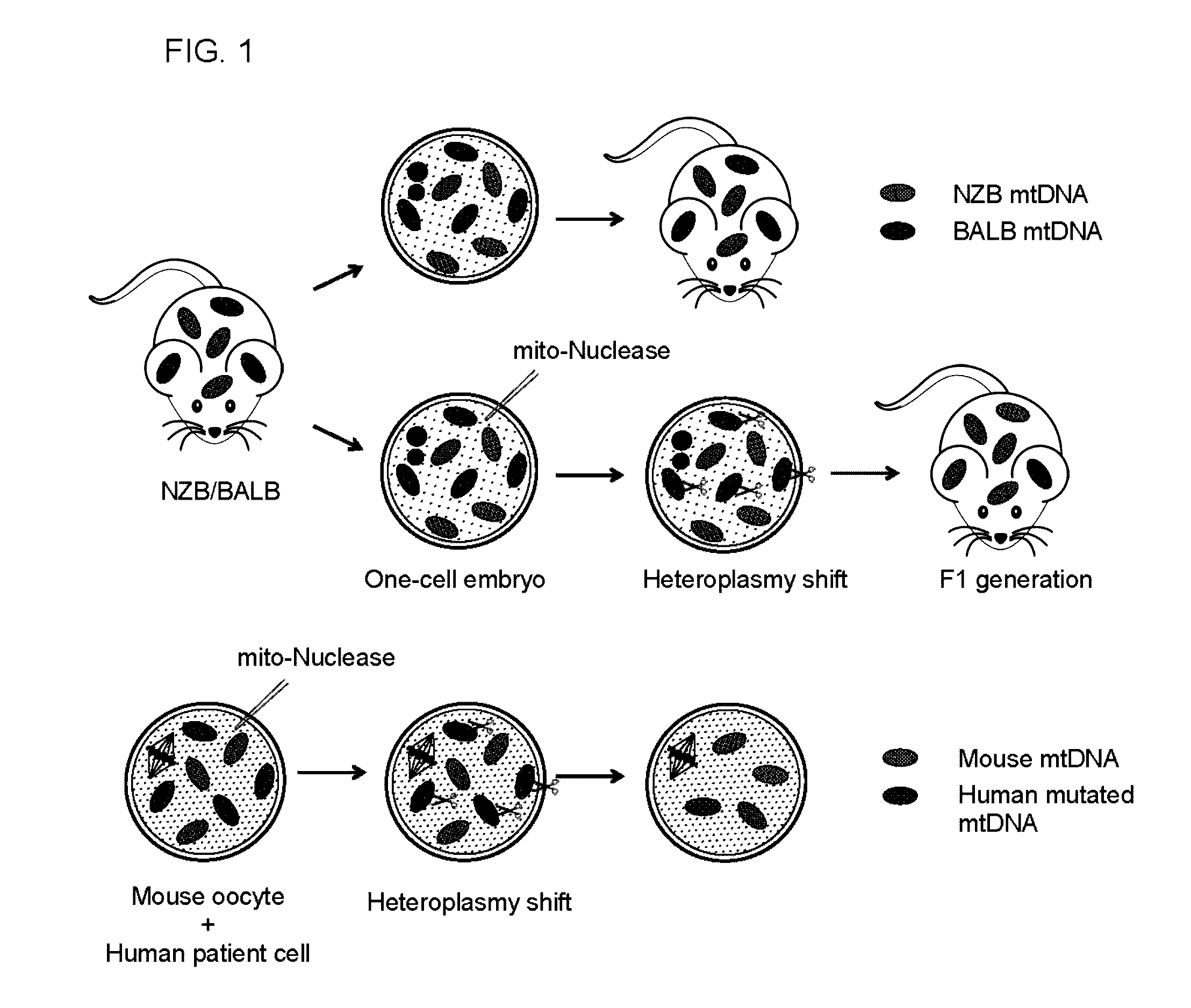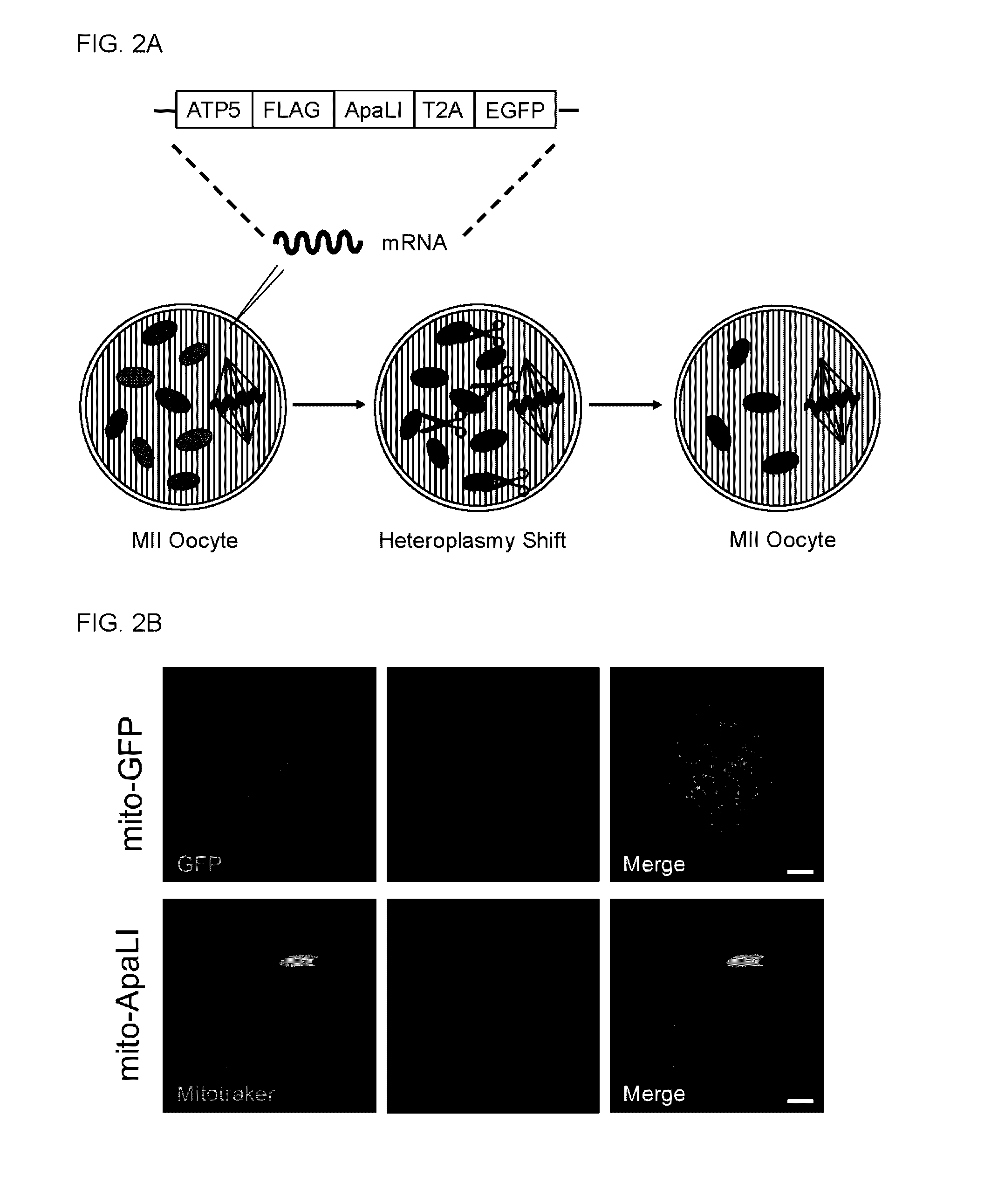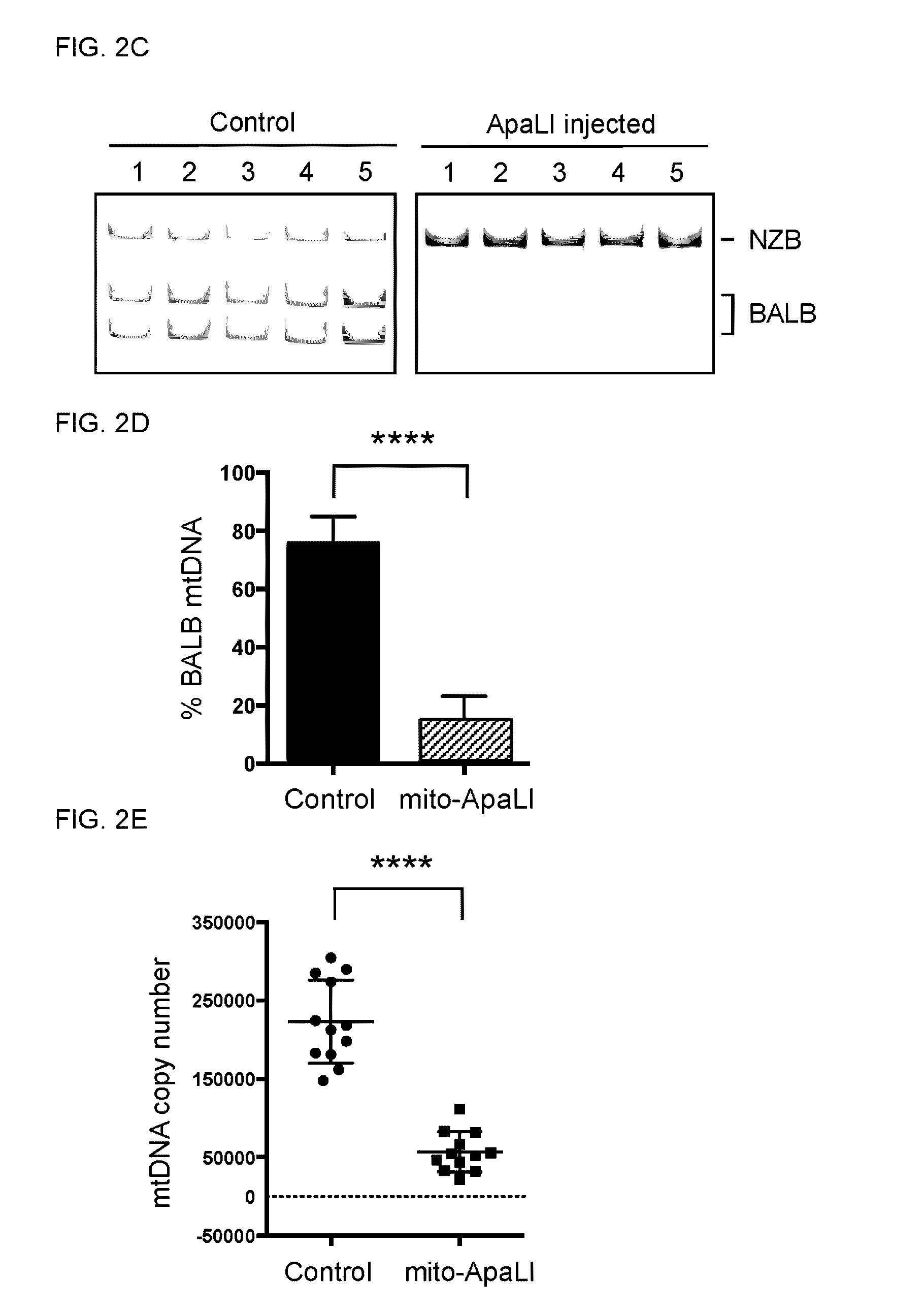Mitochondrial genome editing
a technology of mitochondrial genome and editing technology, applied in the field of mitochondrial genome editing, can solve the problems of pgd only partially reducing the risk of transmitting the disease, compromising embryo viability, and no cure for mitochondrial diseases, so as to reduce the haplotype of mitochondrial dna (mtdna) and prevent transmission. , the effect of reducing the haplotype of mitochondrial DNA
- Summary
- Abstract
- Description
- Claims
- Application Information
AI Technical Summary
Benefits of technology
Problems solved by technology
Method used
Image
Examples
example 1
Overview
[0111]The following examples describe a strategy for preventing germline transmission of mitochondrial diseases by inducing mitochondrial DNA (mtDNA) heteroplasmy shift and specific reduction of mutated mitochondrial genomes through the selective elimination of mutated mtDNA.
[0112]Mutated mitochondrial genomes responsible for human mitochondrial diseases were successfully reduced in mouse oocytes using mitochondria-targeted nucleases. For example, successful reduction in human mutated mtDNA levels responsible for Leber's hereditary optic neuropathy (LHOND), and neurogenic muscle weakness, ataxia, and retinitis pigmentosa (NARP), in mammalian oocytes was achieved using mitochondria-targeted TALEN (mito-TALENs). Altogether, the approaches described represent a therapeutic avenue for preventing the transgenerational transmission of human mitochondrial diseases caused by mutations in mtDNA.
[0113]Further, by taking advantage of NZB / BALB heteroplasmic mice (which contain two mtDNA...
example 2
Specific Reduction of Mitochondrial Genomes in Oocytes and Embryos Using Restriction Endonucleases
[0115]The following example describes the specific reduction of mitochondrial genomes in oocytes and embryos using restriction endonucleases as a therapeutic approach for preventing the germline transmission of mitochondrial diseases caused by mtDNA mutations by selectively eliminating BALB mtDNA in NZB / BALB oocytes.
[0116]The specific elimination of BALB mtDNA in NZB / BALB oocytes and one-cell embryos were tested. For this purpose, a mammalian codon optimized ApaLI targeted to mitochondria by the ATP5b mitochondria targeting sequence and the ATP5b 5′ and 3′ UTRs to promote co-translation import from mitochondrial associated ribosomes was generated. An enhanced GFP (EGFP) reporter was also included in the construct to monitor expression (see e.g., FIG. 2A). First, the mitochondrial localization of the ApaLI protein generated from the construct by immunostaining in NZB / BALB tail tip fibrob...
example 3
Preventing the Transmission of Mitochondrial Genomes Using Mitochondria-Targeted Restriction Endonucleases
[0119]The following example describes the prevention of transmission of mitochondrial genomes using mitochondria-targeted restriction endonucleases.
[0120]Next, it was investigated whether induction of mtDNA heteroplasmy shift could be utilized for preventing the transmission of mitochondrial diseases to the next generation. NZB / BALB one-cell embryos injected with mito-ApaLI mRNA were cultured in vitro until the blastocyst stage and transferred to pseudopregnant mice (see e.g., FIG. 6A). After a standard gestation period, pseudopregnant mice gave birth to live pups through natural delivery (see e.g., FIG. 6B). Most importantly, RFLP analysis of total DNA from F1 mito-ApaLI animals revealed a significant reduction of BALB mtDNA (see e.g., FIG. 6C). Further analysis demonstrated reduction of BALB mtDNA in the brain, muscle, heart, and liver. These data indicate the systemic clearan...
PUM
| Property | Measurement | Unit |
|---|---|---|
| Fraction | aaaaa | aaaaa |
Abstract
Description
Claims
Application Information
 Login to View More
Login to View More - R&D
- Intellectual Property
- Life Sciences
- Materials
- Tech Scout
- Unparalleled Data Quality
- Higher Quality Content
- 60% Fewer Hallucinations
Browse by: Latest US Patents, China's latest patents, Technical Efficacy Thesaurus, Application Domain, Technology Topic, Popular Technical Reports.
© 2025 PatSnap. All rights reserved.Legal|Privacy policy|Modern Slavery Act Transparency Statement|Sitemap|About US| Contact US: help@patsnap.com



